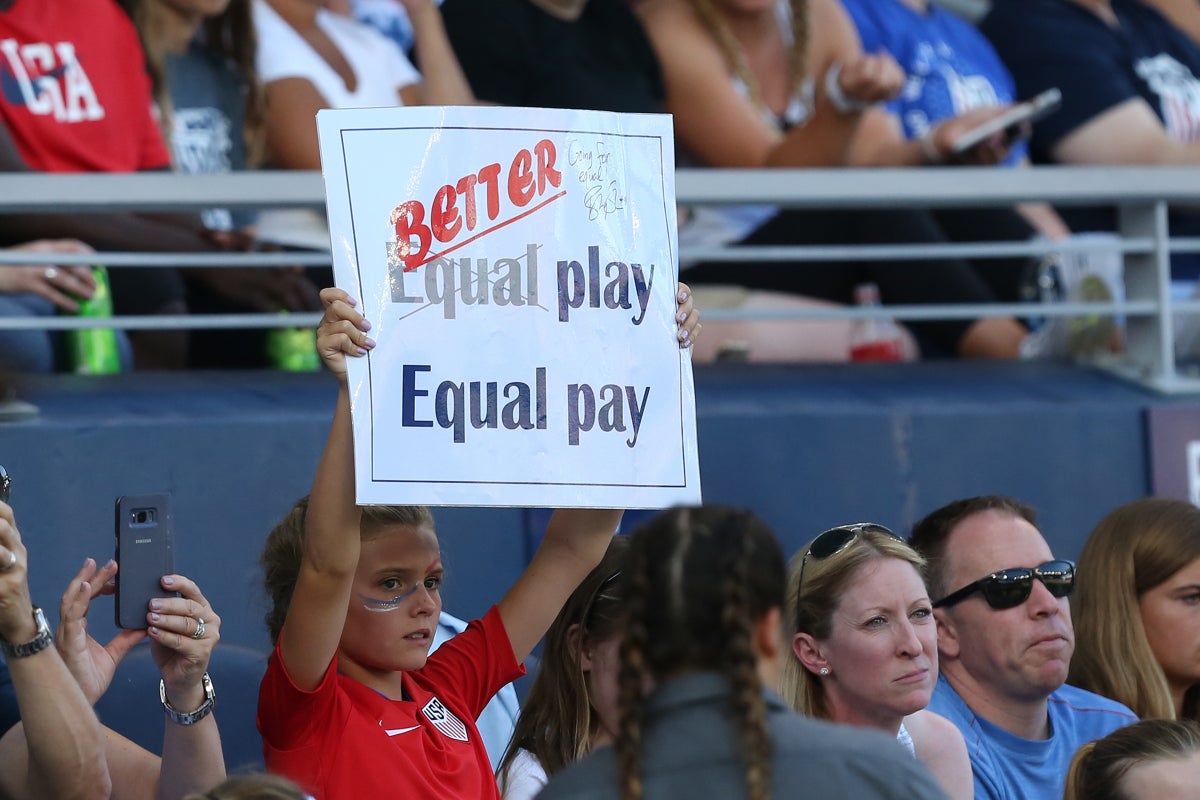Products You May Like
Get access to everything we publish when you
sign up for Outside+.
Welcome to Splits, a twice-a-month column by Erin Strout, a freelance writer based in Flagstaff, Arizona, who covers health, fitness, and women in sports. This space will offer commentary and analysis on the running culture, news, and events that move women. If you have an idea of something you want to see covered, feel free to let us know. You can find Erin on Twitter and Instagram: @erinstrout.
When the U.S. Women’s National Soccer team reached a proposed settlement in its class action equal pay lawsuit against the U.S. Soccer Federation in February, decorated soccer star Megan Rapinoe said, “When we win, everybody wins.”
After a six-year battle, watching this group of talented, skilled, tenacious, popular, entertaining, charismatic women actually receive what they had already earned was satisfying. That these athletes had to simultaneously perform at the highest levels, under intense scrutiny, with little room for error, to further prove they deserved it was infuriating. And to most working women it was also relatable.
The settlement includes a $24 million payment to the players and a pledge by the U.S. Soccer Federation to equalize pay between the men’s and women’s teams in all competitions in the next collective bargaining agreements—this would result in millions of dollars in earnings for the next generation of women’s national soccer stars. As it should be.
Wouldn’t it be nice if the rest of us were greeted by a stadium of 59,000 fans chanting, “Equal pay!” when we scored a victory in the workplace? Maybe Rapinoe will eventually be right, that her win will one day be ours, too. But today, March 15, 2022, recognized in the U.S. as Equal Pay Day—marking how far into the new year women working full time catch up to what men made just last year—is not that day.
According to the National Women’s Law Center, women working full time, year-round in 2020 were paid 83 cents for every dollar paid to men. But because women who remained in the labor force in 2020, during the pandemic, had higher earnings than the women who lost or were forced to leave their jobs, the data is deceiving—it doesn’t reflect the millions of jobs that were lost were largely among low-paid workers.
Comparing all women workers with all men workers, regardless of how many hours they worked? In 2020, women were paid 73 cents for every dollar paid to men.
The wage gap isn’t just sexist, of course. It’s also racist. Black Equal Pay Day isn’t until September 21—Black women earned 63 cents for every dollar a white, non-Hispanic man earned in 2020. Native American women took home 50 cents for every dollar men were paid. Latina Equal Pay Day lands on December 8 because Latinas were paid 49 cents for every dollar the white man deposited in 2020, according to the American Association of University Women.
The implications of financial insecurity among women run deep. Pay gaps influence social security, retirement funds, and health insurance. Less wealth accumulation leads more women into poverty in their later years than men because they haven’t saved as much. Financial security protects our access to healthcare, it affords us the time and resources to seek medical help when we need it, which ultimately keeps us productive in the workforce. Fair pay keeps our children out of poverty, too. According to the World Health Organization, economic instability leads to higher risk of alcoholism, insufficient physical activity, increased blood pressure, and diabetes.
And it’s not just our physical health that is put in jeopardy, either. A 2016 study published in Social Science & Medicine surveyed 22,581 working adults and found that women who earned less than their male counterparts had a 2.5 times higher chance of major depression and four times greater odds of anxiety than men of the same age, education, family composition, and occupation. The research also showed that when women’s income was greater than their male counterparts, women’s odds of depression and anxiety were equivalent to men’s.
Honestly, wouldn’t it be easier just to pay everybody what they’ve earned?
It’s always inspiring to see women with far-reaching platforms use their power and influence to bring attention to the larger societal problems that all of us face. Whether it’s the U.S. Women’s Soccer team taking its federation to task or elite runners like Alysia Montaño, Allyson Felix, and Kara Goucher mustering the courage to call attention to the unfair maternity and family leave policies that had cut many women’s running careers short, we all stand to gain.
When they win, we all win. Maybe one day.
